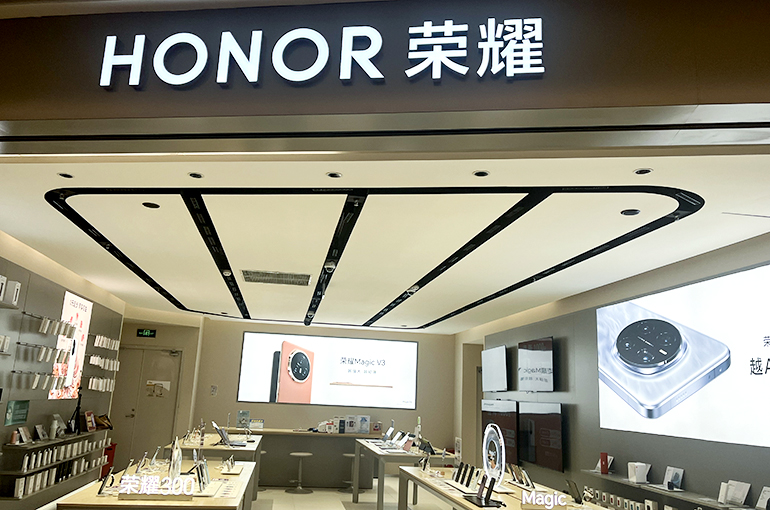 From Phones to Robots: China's Honor Builds Tech Team for Next Frontier
From Phones to Robots: China's Honor Builds Tech Team for Next Frontier(Yicai) June 6 -- Chinese smartphone maker Honor has begun recruiting testing engineers and dexterous hand design engineers as part of its push into the robotics industry.
The brand, which was spun off from Huawei Technologies in 2020, has recently posted several robotics-related job openings on its official website. Since the separation, the budget phone maker has repositioned itself as a premium technology brand, developing artificial intelligence-powered products including tablets and wearables.
The testing engineer role involves designing and implementing both hardware and software testing solutions for robotic systems, as well as developing automated test scripts. The position will be based in Beijing, Shanghai, or Shenzhen under Honor’s new business incubation department.
Meanwhile, the dexterous hand design engineer will be responsible for designing mechanical structures for high-degree-of-freedom dexterous hands and developing multi-modal tactile sensor systems and actuators.
According to Yuan Shuai, deputy secretary-general of the Zhongguancun Internet of Things Industry Alliance, it is not surprising that leading smartphone makers are exploring robotics. “Smartphones and robots share several core technologies, such as cameras, gyroscopes, and accelerometers,” Yuan told Yicai.
He noted that smartphone makers possess deep technical expertise in areas like sensor calibration and image processing algorithms -- an advantage that can significantly enhance robots’ environmental perception capabilities.
Production and Talent Challenges
Despite the technological overlap, smartphone manufacturers entering the robotics field face significant challenges in production adaptation and talent acquisition.
“Multi-modal environmental perception, stable human-robot interaction, and real-time safety control all require highly responsive and fault-tolerant system architecture,” said Zheng Yangyang, a robotics researcher at SMY Cloud Technology Group. “This means longer development cycles and higher trial-and-error costs for new robotic products.”
Zheng added that building mature robotic systems demands interdisciplinary expertise. “While existing smartphone software engineers can contribute to AI and algorithm development for robots, successful products also require talent from new fields such as mechanical and electronic control. Integrating new experts into existing tech teams will be challenging.”
He also warned that adapting smartphone production lines for robotics manufacturing would be a “cash-intensive and slow” process.
To navigate this transition, Yuan recommends smartphone companies prioritize developing universal capabilities rather than chasing short-term returns. This includes building general-purpose computing platforms, perception modules, and human-machine interaction systems.
“Such a strategy could enable smartphone manufacturers to strengthen their entire smart hardware ecosystem through robotics R&D,” Yuan added. He emphasized that the underlying logic for entering the robotics field is to lay the foundation for a future Internet of Everything ecosystem -- and to avoid becoming mere bystanders in the next wave of smart terminal innovation.
Editors: Tang Shihua, Emmi Laine